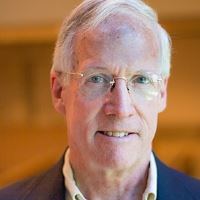Commentary on Matthew 11:2-11
The question of John the Baptist to Jesus is one of the most important questions of Advent and of Christian theology more broadly.
“Are you the one who is come, or are we to wait for another?” (Matthew 11:3).
We need to qualify the question from the perspective of the first century. Not all Jewish communities were oriented to the end-times, and not all anticipated a messianic figure. One Jewish community (Qumran) seemed to envision two messianic figures. Moreover, end-time Jewish communities debated the nature, identity, and activity of God’s final end-time agent. John was not the only one asking, with wider reference, “Are you the one?”
The Gospel according to Matthew steps into the middle of this debate. According to Matthew, it is Jesus who is “the one.” Indeed, Jesus defines the realm of heaven for the disciples (the church).
Matthew 11:4-6 gives Matthew’s evidence that Jesus is the one. People who have been unable to see can now see. People who have been unable to walk can now walk. People afflicted with leprosy are now cleansed. People who could not hear can now hear. People who live in poverty can look forward to economic regeneration.
From the perspective of end-time thinkers, conditions such as the inability to see, walk, and hear are characteristic of the broken old age. In the realm of heaven, God will release individuals and systems from these curses so that all interactions and relationships take place according to God’s original purposes. Matthew interprets people regaining sight etc. as signs that God is already beginning to manifest, partially, the realm of heaven through the ministry of Jesus. After the resurrection, this ministry continues through the church.
Another purpose of Matthew 11:7-11 is to explain that John is not the one. The disciples of John and the disciples of Jesus may have debated one another as to which leader was “the one.” Matthew seeks to settle that question while pointing to an important role for John in the apocalyptic time line.
As part of Advent reflection, the sermon might ponder similarities in the world today. Different religious and social groups put forward different ways for envisioning ultimate purposes for human life. Not only that, but within the Christian world itself, different Christian groups put forward different interpretations of Jesus and of God’s aims. On what basis does a congregation make a choice as to which ones are more or less reliable? If the church opts for Matthew’s perspective, how does the church regard other possibilities?
Jesus wonders why the crowds went into the wilderness. Surely the crowd did not go to see a reed shaken by the wind or to see elite people, who profited from supporting the Roman empire, in soft robes and in royal palaces (Matt 11:7-8). Herod sometimes used the reed as a symbol.
Today’s reader may wonder why the crowd might have expected a reed and palaces in the wilderness. The answer is that Herod and others who conspired with the Roman Empire had symbols of their authority, and lush homes, along the Jordan River valley where John had been preaching and immersing.
Matthew portrays the crowd not going to the wilderness to align themselves with the power brokers of the old age, but going to see a prophet. In Matthew’s Gospel, John is not only a prophet but is the final prophet before the end. Indeed, John fulfills the role forecast by Malachi for Elijah to return from heaven to signal that the time of transition from the old to the new has come. (Matthew 11:9-10; Malachi 3:1; 4:5).
While not assigned to the reading for today, Matthew 11:12-15 adds an important pastoral voice to this discussion. John suffered violence as a result of his witness to the realm. Herod beheaded John (Matthew 14:1-12). Pilate murdered Jesus. According to Matthew, witnesses to the realm of heaven have suffered such violence from the time of John through the time of Matthew’s own community (Matthew 11:12). Matthew’s congregation was in tension with many contemporaries of that day, and, hence, would continue to experience violence in response to the community’s witness (Matthew 5:10-13).
Many preachers accept Matthew’s answer to John’s question, “Are you the one?” Such Advent preachers often speak of the already and not yet. The signs of the realm we see in the world today offer moments of renewal for the present while pointing to the future completion of the realm. Such signs give us the confidence to continue living in hope. Indeed, we can join God in bringing such signs to expression.
Yet, some Christians raise a searching question. “If Jesus is the one, where is evidence that a great transformation is truly underway? The world appears to be pretty much the same as it was before Jesus with respect to idolatry, injustice, powerlessness, exploitation, scarcity, and violence. Why should we think things will get better? Why should we continue to be committed to Jesus and the church?”
I take the story of Jesus as re-affirming the confidence (already present in the Torah, Prophets, and Writings) that God never gives up on offering the world opportunities to become more like the realm of heaven.
But we need not “wait for another.” Indeed, we need not “wait” at all. The story of Jesus has proven to be a reliable guide to restoration. The sermon might help the congregation name how we can participate with God in restoration, and identify other communities that share similar hopes and seek common purpose.


December 11, 2016